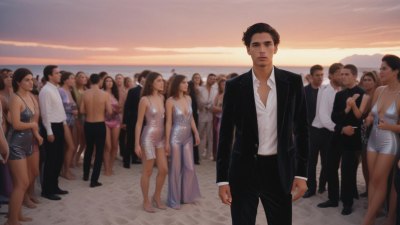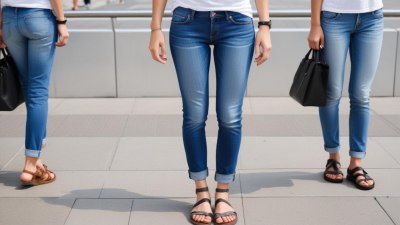How Australia’s Weather Somehow Includes Snow, Heatwaves, and Floods in One Year
Explore the extremes of Australia's weather, from snow to heatwaves and floods, in just one year.

Australia is known for its unique and often extreme weather patterns, a characteristic that can lead to seemingly contrasting phenomena occurring within the same year. From snow-dusted landscapes in the southern regions to heatwaves rising in the north, and the drenching rains causing floods, the climatic variances in Australia are a testament to its diverse ecosystem.
This article delves into how these weather extremes can coexist and even occur simultaneously across different regions of this vast country, driven by various climatic factors.
The Basics of Australia's Climate
Australia's climate is influenced by its geographical size and varied topography. The continent spans multiple climate zones, ranging from tropical in the north, temperate in the south, to arid in the interior. This diversity allows for a wide range of weather conditions that can change dramatically even within the same day or week.
While the northern parts of Australia experience a tropical climate with distinct wet and dry seasons, the southern regions encounter cold fronts and snow during winter. This geographical and climatic diversity leads to the interesting weather phenomena experienced throughout the year.
Understanding Extreme Weather Events
Extreme weather events like heatwaves, snow, and floods are not simply random occurrences; they are influenced by large-scale atmospheric patterns and phenomena such as El Niño and La Niña. These climate drivers have significant impacts on weather conditions across Australia and can lead to extreme weather.
El Niño is associated with warmer and drier conditions, often resulting in severe droughts and heatwaves, particularly in the eastern parts of the country. Conversely, La Niña tends to bring above-average rainfall and cooler temperatures, often resulting in flooding situations in various regions. The interplay of these phenomena can result in a dramatic shift in weather patterns.
Snow in Australia: A Winter Wonderland
Snowfall in Australia is most commonly associated with the colder months, particularly in the Australian Alps, Tasmania, and parts of the southern highlands of New South Wales and Victoria. Areas like Perisher and Thredbo transform into popular ski resorts during the winter months. Snowfall and winter weather can occur as early as May and can last until October, with some years experiencing significant snowfall that attracts both tourists and locals alike.
However, unusual snow events can still occur during warmer months, especially when cold fronts sweep in from the Antarctic region. For instance, parts of the Snowy Mountains can experience late-season snowfall or irregular weather phenomena can drop temperatures dramatically, resulting in unexpected snowfalls.
Heatwaves: The Scorching Reality
On the flip side, heatwaves are a prevalent issue in Australia, particularly during the summer months. Defined as several days of excessively hot weather, heatwaves can cause severe health impacts, strain power resources, and exacerbate existing drought conditions. Regions like the Outback, Western Australia, and parts of Queensland frequently experience temperatures exceeding 40°C (104°F).
Heatwaves can lead to increased bushfire risks, impacting wildlife, air quality, and water supply. These scorching conditions can be exacerbated by the aforementioned climatic influences, with El Niño years typically seeing a rise in frequency and intensity of heatwaves.
Flooding: The Power of Water
Flooding is another significant aspect of Australia’s weather extremes, often resulting from the heavy rain associated with La Niña conditions. When tropical cyclones or monsoon rains collide with warmer coastal air, they can lead to torrential downpours that cause rivers to overflow and lead to widespread flooding.
Regions across Queensland, New South Wales, and Victoria can be severely impacted by flooding events, particularly following prolonged periods of heavy rainfall. In some instances, floods happen only weeks after extreme drought conditions, highlighting the extreme weather contrasts that can occur within a single year.
The Interplay Between Weather Patterns
The coexistence of these diverse weather extremes is not merely a coincidence but rather a manifestation of the complex interactions between atmospheric conditions, ocean temperatures, and local geography. Events such as heatwaves can set the stage for dryer conditions and lower soil moisture, which, if followed by significant rainfall, may lead to flooding.
Furthermore, the impacts of climate change are becoming increasingly pronounced, with shifting weather patterns and the growing intensity of weather events such as those seen in recent years. As temperatures rise globally, the potential for an increase in extremes—be it excessive heat or severe precipitation—creates a more unpredictable climate, exacerbating existing weather phenomena.
Case Studies: 2023’s Weather Extremes
Taking 2023 as a case study showcases the unpredictable nature of Australia's weather. The year saw a stark contrast of unparalleled heatwaves in the interior and southeastern regions while northern Queensland and parts of New South Wales experienced significant flooding. The events resulted from a combination of a prolonged heatwave followed by heavy La Niña rainfall that led to widespread disruptions.
Snowfall also graced the southern regions, coinciding with cooler temperatures brought on by the same atmospheric disturbances fueling the rain. Such simultaneous weather extremes highlight the challenges faced by meteorologists and the communities affected.
Decoding the Complexity of Weather Forecasting
Weather forecasting in Australia requires understanding this complexity, and meteorologists continually develop models that consider all variables at play. While advances in technology have improved the accuracy of long-term forecasts, the inherent unpredictability of weather systems makes perfect prediction elusive.
Public awareness and preparedness are vital during different weather extremes, highlighting the need for resilience against potential disaster scenarios, whether heatwaves or flooding. Education campaigns regarding safety, climate awareness, and the significance of adaptation to changing conditions are essential for community resilience.
The Future of Weather in Australia
Looking forward, understanding the interactions between these weather extremes is crucial as Australia faces the implications of climate change. As atmospheric conditions become more volatile, the likelihood of seeing snow, heatwaves, and floods in one year could become more prevalent, painting a picture of a challenging climate landscape to navigate.
Conversely, addressing these weather extremes through policy and sustainable practices can promote resilience, adaptation, and preparedness. As cities grow and populations increase, the spotlight on finding solutions to manage and mitigate the impacts of these harsh weather conditions intensifies.
In conclusion, Australia's weather is a testament to the intricate and often paradoxical nature of the climate. With weather patterns ranging from snow to heatwaves and floods, the year is filled with diverse phenomena influenced by geographical and climatic diversity along with broader climate changes. Emphasizing the importance of awareness and preparedness will be paramount as communities navigate these ever-changing conditions, ensuring safety and resilience in the face of nature's unpredictability.











